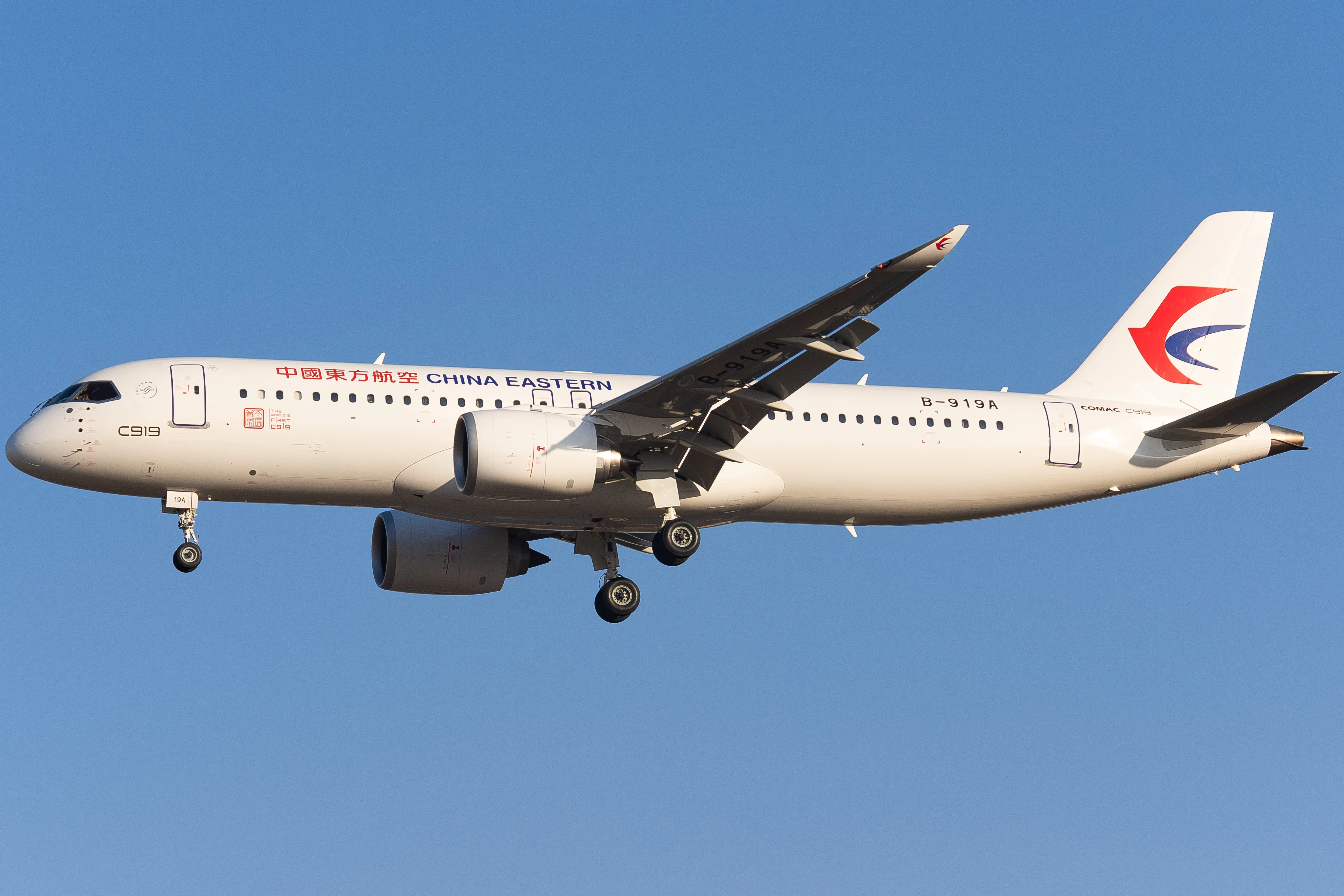
China Eastern Orders 100 Chinese C919 Jets
Sep 29, 2023

China Eastern Airlines has placed a significant order for 100 domestically produced C919 jets, marking a pivotal moment for the Chinese aviation industry. This order highlights China's ambition to establish a more self-sufficient aerospace sector and reduce reliance on foreign aircraft manufacturers. The C919, developed by Commercial Aircraft Corporation of China, is designed to compete with established models from Boeing and Airbus, offering a modern and efficient alternative for airlines. The deal underscores the growing confidence in China's aviation capabilities and its efforts to boost economic growth through advancements in technology and manufacturing within the aviation sector.
In a significant development for the aviation industry, China Eastern Airlines has placed a substantial order for 100 Chinese C919 jets. This decision marks a pivotal moment for both the airline and the domestic aircraft manufacturing sector, showcasing the growing capabilities and ambitions of China's aerospace industry. The C919, produced by Commercial Aircraft Corporation of China (COMAC), is designed to compete with established models like the Boeing 737 and Airbus A320. Below, we explore the implications of this order, the features of the C919, and its potential impact on the global aviation market.
Overview of the C919 Aircraft
The C919 is a narrow-body twin-engine jet designed for short to medium-haul flights. Here are some key features:
- Capacity: Up to 168 passengers in a single-class configuration.
- Range: Approximately 5,555 kilometers (3,448 miles).
- Fuel Efficiency: Equipped with modern engines that provide better fuel economy compared to older models.
- Advanced Technology: Incorporates state-of-the-art avionics and materials to enhance performance and passenger comfort.
China Eastern's Strategic Move
China Eastern Airlines' decision to order 100 C919 jets is strategically aligned with its growth plans. This order not only supports the airline's expansion but also contributes to the broader goal of reducing reliance on foreign aircraft manufacturers. By investing in domestic aviation technology, China Eastern is positioning itself to better serve the increasing demand for air travel in China.
Market Implications
The order for 100 C919 jets holds several implications for the aviation market:
- Strengthening Domestic Industry: The C919 order is a vote of confidence in China's aerospace sector, which aims to establish itself as a competitor in the global market.
- Economic Growth: Increased production of C919 jets could stimulate job creation and technological advancements within the country.
- Competitive Pricing: The C919 is expected to be offered at a competitive price point, potentially attracting more airlines to consider it as a viable alternative to Western aircraft.
Challenges Ahead for the C919
Despite the optimism surrounding the C919, there are challenges that need to be addressed:
- Certification and Safety: Gaining international certification can be a lengthy process. The C919 must meet stringent safety and regulatory standards before it can compete globally.
- Market Acceptance: Convincing airlines outside of China to adopt the C919 will require demonstrating reliability and performance that matches or exceeds competitors.
- Supply Chain Concerns: As demand for the C919 increases, ensuring a robust supply chain to support production is crucial.
Comparative Analysis: C919 vs. Competitors
To better understand the C919's position in the market, we can compare it with its main competitors—the Boeing 737 and Airbus A320. The following table summarizes the key specifications:
| Aircraft Model | Passenger Capacity | Range (km) | Fuel Efficiency |
|---|---|---|---|
| C919 | 168 | 5,555 | High |
| Boeing 737 | 138-210 | 5,500 | Moderate |
| Airbus A320 | 140-240 | 6,500 | Moderate |
Future Outlook for China Eastern and C919
The future looks promising for both China Eastern Airlines and the C919 aircraft. With the increasing demand for air travel in China, the C919 is well-positioned to capture a significant share of the market. Additionally, as the airline continues to modernize its fleet, the integration of the C919 will enhance its operational efficiency and competitiveness.
Furthermore, the successful introduction of the C919 could pave the way for additional orders from other airlines, reinforcing China's position in the global aviation market. With ongoing investments in research and development, the potential for further advancements in aircraft technology remains high.
Conclusion
In summary, China Eastern's order for 100 C919 jets signifies a major leap forward for China's aviation industry. As the C919 continues to undergo testing and certification, its eventual success could reshape the competitive landscape of commercial aviation. The implications of this order extend beyond just one airline, potentially influencing the strategies of carriers worldwide and altering the dynamics of aircraft manufacturing on a global scale.
Related Articles

Explore Thailand: The Best Islands to Visit for Paradise, Adventure, and Relaxation

The Ultimate Guide to the Best Islands in Thailand for Your Next Getaway

Do babies need passports? How to get a passport for a newborn

How to get a U.S. passport fast: here’s how to expedite the process

What is Mobile Passport Control: 5 reasons why you should use it

SENTRI vs. Global Entry: A detailed guide

Do you need a passport to go to the Bahamas? Let’s find out

Do you need a passport to go to Mexico? A detailed guide

Do you need a passport to go to Canada? We got the answer

Do You Need a Passport for a Cruise: An Essential Travel Guide

Booster Seat Requirements: All the Rules to Follow in Your Rental Car

What Are the World’s Most Powerful Passports, and How Does Yours Rank?

How to Take a Passport Photo at Home: A Helpful Guide

You've got to have heart! Southwest's new livery

Your opinion: Should water be free on low cost carriers?

Young women bolder than guys as solo travellers
